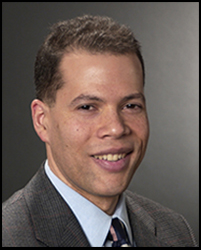Director's Corner

George S.M. Dyer, M.D. | ![]() PDF
PDF
This issue of the Orthopaedic Journal at Harvard Medical School has special significance to me as publishing this issue marks the end of my first year serving as program director for Harvard’s orthopaedic residency. Not very long ago I was a resident myself, and I had the privilege then of serving as editor of this Journal.
The Journal and our residency program have each evolved, in complementary and parallel ways, becoming more refined, more modern, and better centered on educating our residents. This Journal was once a flat-spine printed magazine, with a hefty cost to publish and a production schedule that was driven by the demands of the layout process and the print shop’s calendar. It is now a visually appealing, interactive web page which can be dynamically improved throughout the year. It used to be a limited-run printing, mailed selectively to HCORP graduates and physicians in our geographic area. It is now universally accessible on-demand through the internet. Especially exciting this year is the addition of a virtual alumni network that allows current residents, recent graduates, fellows and established surgeons to get in touch with one another around the country.
Our residency program is evolving too. Our residency once had very little curricular planning; the breadth and richness of our clinical activities was enough to ensure a great training experience even without much of a syllabus. Recently our alphabet soup of governing organizations, the Accreditation Council on Graduate Medical Education (ACGME), the Residency Review Committee (RRC), and the American Board of Orthopaedic Surgery (ABOS ), has created a standard set of discrete training objectives for all residency programs. Called “Milestones,” these 13 procedures (and non-procedures) are designed to ensure that all residents get a systematic and evaluated exposure to the core of our specialty. They are not optional, even for programs like ours that did pretty well without them. This means that the Harvard orthopaeid residency, like our Journal, will become more dynamic and adaptable over time. We’ve experimented with some new training venues, like the Trauma Bootcamp described in this issue. We are also working on innovative new rotations such as a month-long rotation for all our interns at the end of the coming year, just before they move full-time into orthopaedic rotations.
We are as proud of our past as we are excited by our future. The new format of this Journal and our new alumni map and database should make it easier than ever for you to keep in touch and stay up to date on our new happenings. We look forward to hearing from you in the years ahead.
George S.M. Dyer, MD
Program Director, Harvard Combined Orthopaedic Residency Program

- In This Issue
- Director's Corner
- Dedication
- Editors' Letter
- Original Submissions
